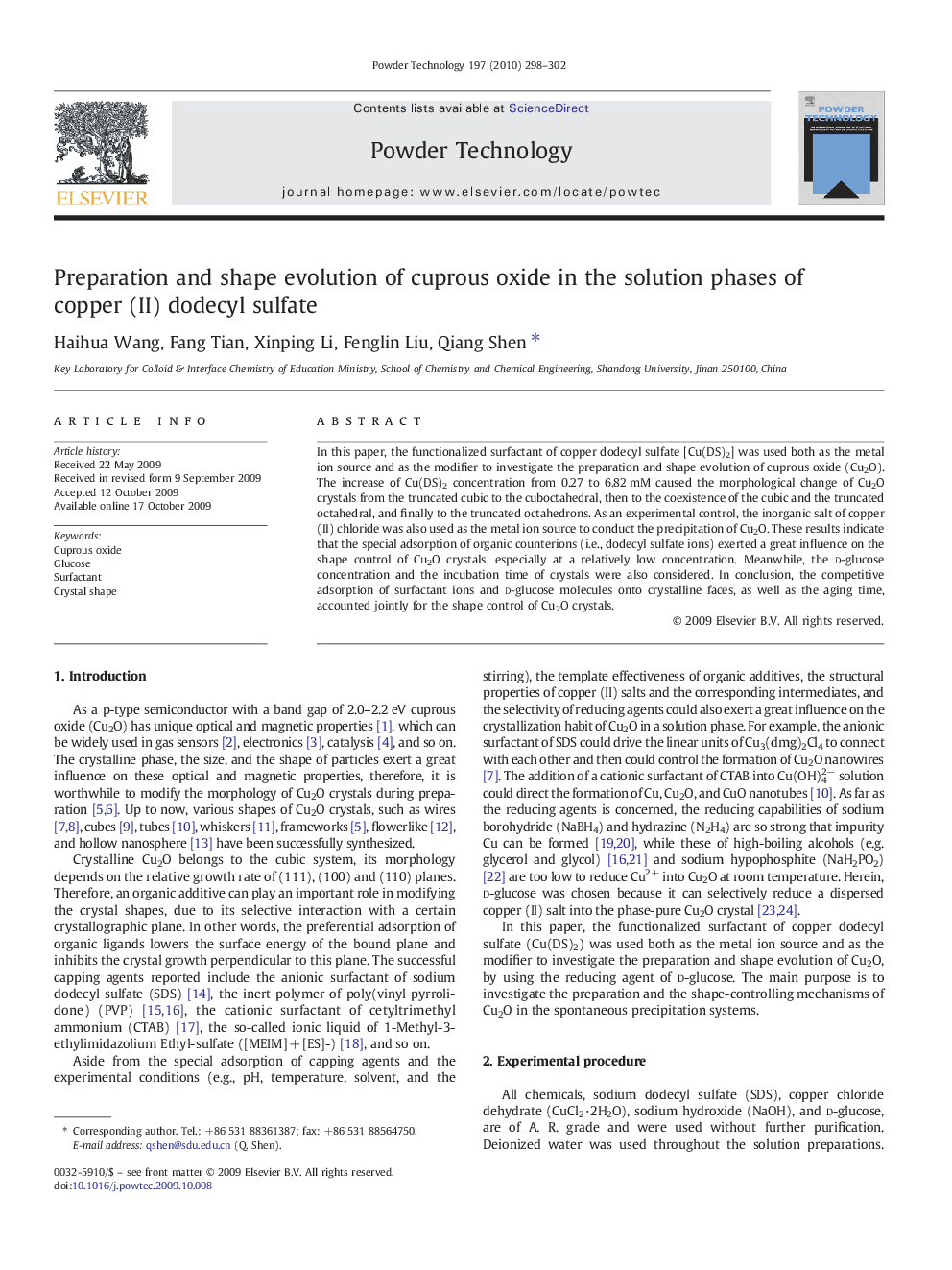| Article ID | Journal | Published Year | Pages | File Type |
|---|---|---|---|---|
| 238477 | Powder Technology | 2010 | 5 Pages |
In this paper, the functionalized surfactant of copper dodecyl sulfate [Cu(DS)2] was used both as the metal ion source and as the modifier to investigate the preparation and shape evolution of cuprous oxide (Cu2O). The increase of Cu(DS)2 concentration from 0.27 to 6.82 mM caused the morphological change of Cu2O crystals from the truncated cubic to the cuboctahedral, then to the coexistence of the cubic and the truncated octahedral, and finally to the truncated octahedrons. As an experimental control, the inorganic salt of copper (II) chloride was also used as the metal ion source to conduct the precipitation of Cu2O. These results indicate that the special adsorption of organic counterions (i.e., dodecyl sulfate ions) exerted a great influence on the shape control of Cu2O crystals, especially at a relatively low concentration. Meanwhile, the d-glucose concentration and the incubation time of crystals were also considered. In conclusion, the competitive adsorption of surfactant ions and d-glucose molecules onto crystalline faces, as well as the aging time, accounted jointly for the shape control of Cu2O crystals.
Graphical abstractShown is the shape evolution of Cu2O crystals against the increase of d-glucose concentrations: from the octahedron to the cube and then to the sphere. The competitive adsorption of surfactant ions and d-glucose molecules onto crystalline faces, as well as the aging time, accounted jointly for the shape control of Cu2O crystals. Figure optionsDownload full-size imageDownload as PowerPoint slide
